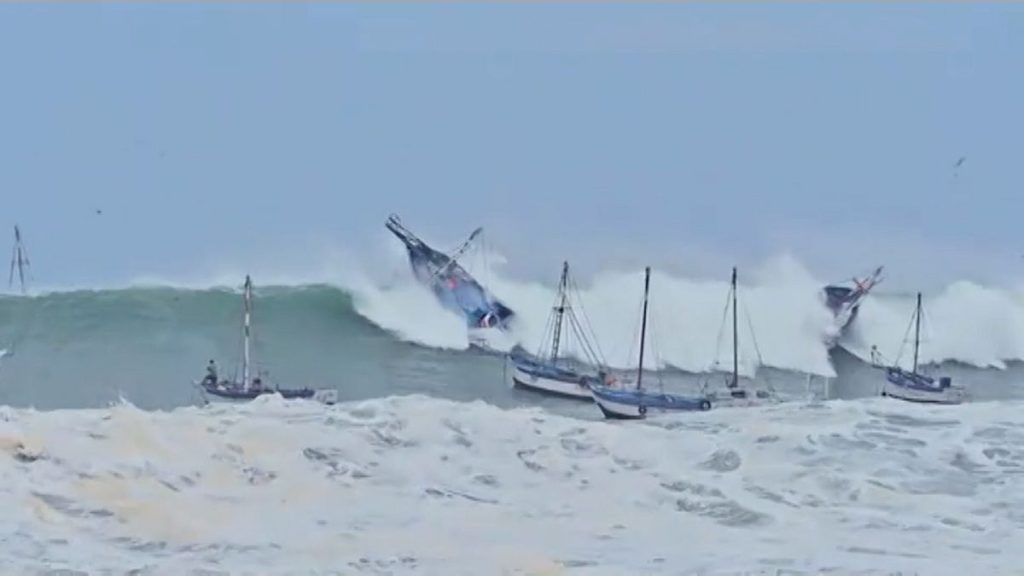The coastlines of Ecuador, Chile, and Peru were recently battered by an onslaught of unusually large waves, leading to tragic loss of life and widespread disruption. The powerful swells, reaching heights of up to four meters, forced the closure of dozens of ports and claimed the lives of at least three individuals. This maritime upheaval underscores the vulnerability of coastal communities to the unpredictable forces of nature and the critical role of preparedness and response mechanisms in mitigating such events’ impact.
Ecuador bore the brunt of the initial wave surge, with two fatalities reported in the southwestern Manta region. The turbulent waters posed a significant threat to maritime activities, forcing the closure of ports and disrupting fishing operations. The loss of life highlights the dangers posed by such extreme weather events and the importance of early warning systems and evacuation protocols to minimize casualties.
Further south along the Pacific coast, Chile also experienced the devastating impact of the large waves, with one confirmed death attributed to the powerful swells. The Chilean authorities likely implemented similar measures to their Ecuadorian counterparts, closing ports and issuing warnings to coastal residents. The shared experience of these neighboring countries emphasizes the regional nature of the event and the need for collaborative disaster management strategies.
Peru, perhaps the most severely impacted by the wave surge, witnessed the closure of three-quarters of its ports as a precautionary measure. This extensive closure illustrates the magnitude of the threat posed by the unusually high waves and the government’s prioritization of safety. The disruption to port operations likely had significant economic repercussions, impacting trade, fishing, and other maritime industries.
The Peruvian Navy played a crucial role in mitigating the human cost of this natural disaster, rescuing approximately 30 fishermen stranded at sea for two days. These fishermen, struggling against the relentless waves to return to Acapulco beach in the northern Tumbes region, faced a precarious situation. Their eventual rescue underscores the importance of maritime search and rescue capabilities and the dedication of those involved in such operations.
The plight of the stranded fishermen was exacerbated by their reluctance to abandon their vessels. Jaime Yacila, the mayor of the affected province, reported that the fishermen’s attachment to their boats, their livelihoods, complicated the rescue efforts. This human element adds another layer of complexity to disaster response, highlighting the need for sensitivity and understanding of the affected communities’ priorities. The capsizing of numerous boats, a testament to the waves’ destructive power, further compounded the challenges faced by the fishermen and the rescue teams. The incident also highlights the economic vulnerability of small-scale fishermen reliant on their boats for their income. Peruvian Defence Minister Walter Astudillo’s direct oversight of the rescue operations, observing from a helicopter, signaled the government’s commitment to addressing the crisis and ensuring the safety of its citizens. His presence on the scene likely facilitated coordination and resource allocation, crucial elements in effective disaster response. Authorities have attributed the extreme wave activity to strong and persistent winds originating off the coast of the United States. This meteorological explanation underscores the interconnectedness of weather systems and the potential for distant events to have far-reaching consequences. The prediction that the waves would subside by Wednesday offered a glimmer of hope for the affected communities, allowing them to begin assessing the damage and embarking on the recovery process. The incident serves as a stark reminder of the destructive power of nature and the importance of proactive measures to mitigate the impact of such events. The experience of Ecuador, Chile, and Peru underscores the need for robust disaster preparedness strategies, efficient response mechanisms, and regional cooperation in addressing the challenges posed by extreme weather phenomena. The focus should now shift to supporting the affected communities, rebuilding infrastructure, and implementing measures to enhance resilience against future such events. The incident serves as a valuable learning opportunity for improving warning systems, evacuation protocols, and search and rescue capabilities, ultimately aiming to minimize the human and economic cost of future natural disasters.














